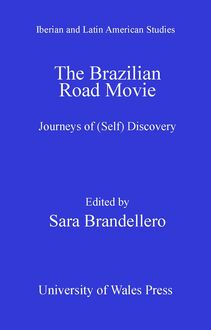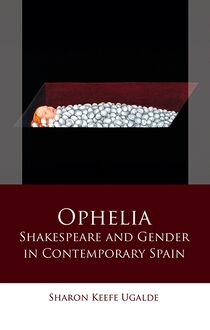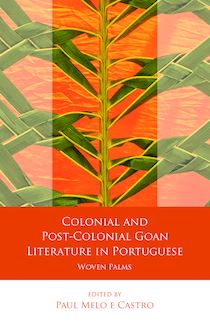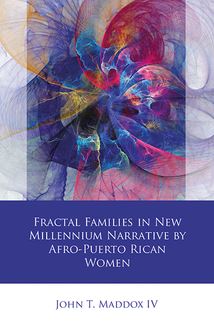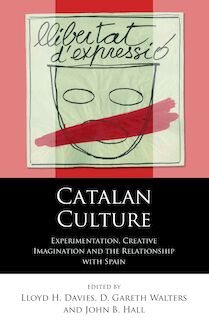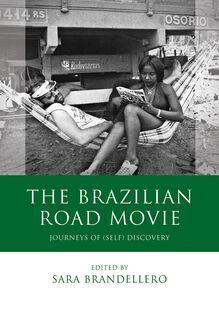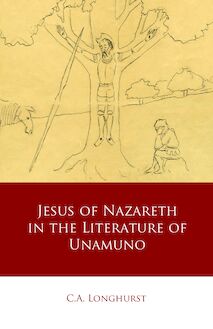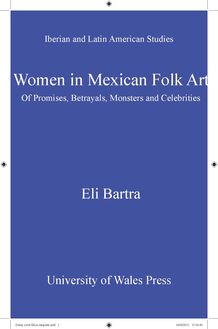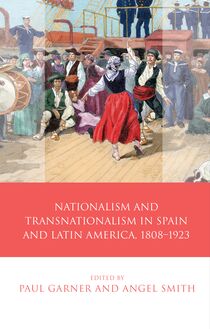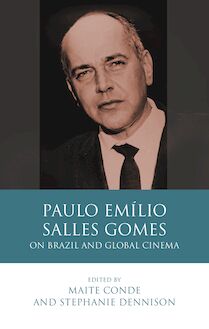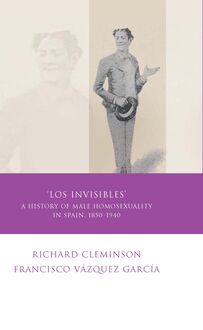The Darkening Nation , livre ebook
114
pages
English
Ebooks
2018
Vous pourrez modifier la taille du texte de cet ouvrage
Obtenez un accès à la bibliothèque pour le consulter en ligne En savoir plus
Découvre YouScribe en t'inscrivant gratuitement
Découvre YouScribe en t'inscrivant gratuitement
114
pages
English
Ebooks
2018
Vous pourrez modifier la taille du texte de cet ouvrage
Obtenez un accès à la bibliothèque pour le consulter en ligne En savoir plus
Publié par
Date de parution
12 avril 2018
Nombre de lectures
1
EAN13
9781786832238
Langue
English
At the turn of the twenty-first century, Argentina was in the midst of its worst economic crisis in decades, the result of years of drastic neoliberal reforms. This book looks at the way ideas about race and nationhood were conveyed during this period of financial meltdown and national emergency, examining in particular how the neoliberal crisis led to the critical self-questioning of the dominant imaginary of Argentina as homogeneously white – allegedly the result of European immigration and the extinction of most indigenous and black people in the nation-building age. The Darkening Nation focuses on how the self-examination of racial and national identity triggered by this crisis was expressed in culture, through the analysis of literary texts, films, artworks and music styles. By considering a wide range of artistic and cultural products, and different forms of racial identity and difference (white, indigenous, Afro-descendant, immigrant and negro as it is understood in local contexts), this study constitutes a timely addition from a literary and cultural studies perspective to recent academic enquiry into race and nation in Argentina.
Figures
Acknowledgements
Introduction
Exceptionalism
Migration
Space
Multiculturalism
Structure and texts
Chapter 1: Neoliberalism and its crisis
Chapter 2: The historical construction of whiteness in Argentina
Chapter 3: Facing darkness in the literature of the crisis
Literary production and the crisis
‘Asterix el encargado’
La Villa
Cucurto
Chapter 4: ‘A Bolivian walks into a bar…’: Race in New Argentinian Cinema
The renovation of Argentinian cinema
Bolivia
Copacabana
Chapter 5: Amerindians, fashion models and picketeers
Huellas
La conquista del desierto
Grupo de Arte Callejero (GAC)
Chapter 6: Cumbia villera and the new racialised marginality
Cumbia music in Argentina
The boom of cumbia villera
Racialising the villero youth
Afterword
Works cited
Publié par
Date de parution
12 avril 2018
Nombre de lectures
1
EAN13
9781786832238
Langue
English
IBERIAN AND LATIN AMERICAN STUDIES
The Darkening Nation
Series Editors
Professor David George (Swansea University)
Professor Paul Garner (University of Leeds)
Editorial Board
David Frier (University of Leeds)
Lisa Shaw (University of Liverpool)
Gareth Walters (Swansea University)
Rob Stone (University of Birmingham)
David Gies (University of Virginia)
Catherine Davies (University of London)
Richard Cleminson (University of Leeds)
Duncan Wheeler (University of Leeds)
Jo Labanyi (New York University)
Roger Bartra (Universidad Nacional Autónoma de México)
Other titles in the series
Catalonia: National Identity and Cultural Policy Kathryn Crameri
Melancholy and Culture: Diseases of the Soul in Golden Age Spain Roger Bartra
The Poetics of Otherness in Antonio Machado’s ‘Proverbios y Cantares’ Nicolas Fernandez-Medina
The Spanish Golden Age Sonnet John Rutherford
María Zambrano: A Life of Poetic Reason and Political Commitment Beatriz Caballero Rodríguez
Nationalism and Transnationalism in Spain and Latin America, 1808–1923 Paul Garner and Angel Smith (eds)
The Enlightenment in Iberia and Ibero-America Brian Hamnett
Graciliano Ramos and the Making of Modern Brazil: Memory, Politics and Identities Sara Brandellero and Lucia Villares (eds)
IBERIAN AND LATIN AMERICAN STUDIES
The Darkening Nation
Race, Neoliberalism and Crisis in Argentina
IGNACIO AGUILÓ
© Ignacio Aguiló, 2018
All rights reserved. No part of this book may be reproduced in any material form (including photocopying or storing it in any medium by electronic means and whether or not transiently or incidentally to some other use of this publication) without the written permission of the copyright owner. Applications for the copyright owner’s written permission to reproduce any part of this publication should be addressed to the University of Wales Press, 10 Columbus Walk, Brigantine Place, Cardiff CF10 4UP.
www.uwp.co.uk
British Library CIP
A catalogue record for this book is available from the British Library.
ISBN 978-1-78683-221-4
eISBN 978-1-78683-223-8
The right of Ignacio Aguiló to be identified as author of this work has been asserted in accordance with sections 77 and 79 of the Copyright, Designs and Patents Act 1988.
The publisher has no responsibility for the persistence or accuracy of URLs for any external or third-party internet websites referred to in this book, and does not guarantee that any content on such websites is, or will remain, accurate or appropriate.
Cover image: Leonel Luna, Laconquista del desierto (2002), digital print on vinyl. By permission.
¿Te acordás cuando regresaste enamorado de tu viaje por todo Latinoamérica? … Que te sentías latinoamericano … Me decías que para ellos éramos Nueva York, y que por suerte la Argentina nunca iba a estar en el nivel de pobreza que vivían ellos. ¿Te acordás? … Bueno, ahora nos hemos latinoamericanizado, andá al barrio de Once y vas a ver en qué se transformó, otro que un mercado persa. ¿De qué te quejás?, tenés que estar contento, ahora sos un latinoamericano de verdad …
Enrique Medina – La espera infinita (2001)
Contents
Series Editors’ Foreword
List of Figures
Acknowledgements
Introduction
Exceptionalism
Migration
Space
Multiculturalism
Structure and texts
1 Neoliberalism and its crisis
2 The historical construction of whiteness in Argentina
3 Facing darkness in the literature of the crisis
Literary production and the crisis
‘Asterix, el encargado’
La Villa
Cucurto
4 ‘A Bolivian walks into a bar …’: race in New Argentinian Cinema
The renovation of Argentinian cinema
Bolivia
Copacabana
5 Amerindians, fashion models and picketeers
Huellas
La conquista del desierto
Grupo de Arte Callejero (GAC)
6 Cumbia villera and the new racialised marginality
Cumbia music in Argentina
The boom of cumbia villera
Racialising the villero youth
Afterword
Notes
Works cited
Series Editors’ Foreword
Over recent decades the traditional ‘languages and literatures’ model in Spanish departments in universities in the United Kingdom has been superseded by a contextual, interdisciplinary and ‘area studies’ approach to the study of the culture, history, society and politics of the Hispanic and Lusophone worlds – categories that extend far beyond the confines of the Iberian Peninsula, not only in Latin America but also to Spanish-speaking and Lusophone Africa.
In response to these dynamic trends in research priorities and curriculum development, this series is designed to present both disciplinary and interdisciplinary research within the general field of Iberian and Latin American Studies, particularly studies that explore all aspects of Cultural Production (inter alia literature, film, music, dance, sport) in Spanish, Portuguese, Basque, Catalan, Galician and indigenous languages of Latin America. The series also aims to publish research in the History and Politics of the Hispanic and Lusophone worlds, at the level of both the region and the nation-state, as well as on Cultural Studies that explore the shifting terrains of gender, sexual, racial and postcolonial identities in those same regions.
List of Figures
Figure 4.1 Dancers rehearsing in Copacabana (2006). Dir. Martín Rejtman
Figure 5.1 Abipón: Noviembre by Gaby Herbstein (1999). Included in Huellas
Figure 5.2 Yámana: Julio by Gaby Herbstein (1999). Included in Huellas
Figure 5.3 Toba: Enero by Gaby Herbstein (1999). Included in Huellas
Figure 5.4 Ocupación militar del Río Negro bajo el mando del General Julio A. Roca, 1879 by Juan Manuel Blanes (1896)
Figure 5.5 La conquista del desierto by Leonel Luna (2002)
Figure 5.6 Photograph of the monument to Julio A. Roca in downtown Buenos Aires, by Alejandro Aguiló (2017)
Figure 5.7 Roca’s anti-monument, by Grupo de Arte Callejero and Comisión Anti-monumento a Roca (2003)
Figure 6.1 Pablo Lescano by Vera Rosemberg (2010)
Acknowledgements
In writing this book, I have been privileged to benefit from advice from many people. I would like to thank my colleagues at the University of Manchester, particularly Lúcia Sá, James Scorer, Frank Eissa-Barroso, Valentino Gianuzzi and Blanca González Valencia, who kindly gave me feedback on the contents of this book. I owe special gratitude to Karl Posso, who believed in this project from the moment it was just a few poorly written sentences in an email. His precious advice, direction and generosity were crucial for the development of the ideas contained in this volume. Jens Andermann and Peter Wade provided me with invaluable input through their comments and inspiration through their work. I am also immensely indebted to Cara Levey and Matías Dewey for their help during the early stages of my academic career.
I am very grateful to the artists and institutions who granted me permission to reproduce their works: Gaby Herbstein and Dana Kamelman, Leonel Luna, Martín Rejtman and Rosa Martínez Rivero, Vera Rosemberg and staff at the Museo Histórico Nacional. Sarah Lewis from the University of Wales Press has been extremely helpful and supportive throughout the elaboration of this book. I would also like to thank the anonymous reviewer for the very useful suggestions.
During the development of this project, I have enjoyed the friendship of many people who have contributed to making Manchester feel like home: Miquel Pomar Amer, Maurício Sellmann Soares de Oliveira, Gustavo Carvajal, David Jiménez Torres, Suzanne Boerrigter, Nicole Peters, Christian Declercq and Gözde Naibog˘lu. My family, and especially my parents, have been an unconditional source of support, love and encouragement. Without them, this book would not have been possible. Finally, I would like to thank Mary, with whom I greet the dawn and stand beside. This book is dedicated to her, in love and solidarity.
Introduction
In January 2016, the Central Bank of Argentina revealed its plans for new peso banknotes designs, which would substitute depictions of national heroes with those of autochthonous animals such as the jaguar, the condor, the hornero bird, the Southern right whale, and the guanaco . The announcement was followed by an article in the country’s leading conservative newspaper, La Nación , entitled ‘Argentina es África’ (Argentina is Africa), which reported some of the public’s initial reactions. 1 The replacement of the country’s founding fathers by local fauna ignited outrage in a significant number of La Nación ’s readers who pointed out that the South African rand , the Congolese franc and the Zambian kwacha also included native animals in their designs. This likening to Africa was, for them, not only unjustified but also insulting. A reader stated: ‘Los países del Tercer Mundo tienen animales en los billetes. No somos un país del Tercer Mundo’ (Third-World countries have animals in their banknotes. We’re not a Third-World country). Another argued: ‘Argentina es un país con historia. Estos animales nos hacen parecer una jungla incivilizada a la que el hombre blanco acaba de llegar’ (Argentina is a country with history. These animals make us look like an uncivilised jungle where white men have just arrived). The racial overtones were also reflected in other comments, which claimed that the fauna in the notes implied that Argentina was ‘uno esos países de población mestiza’ (one of these countries with mestizo population). References were also made to the Brazilian real , which features endangered native animals. For the readers, old tropes that postulated the opposition between Western civilisation and the Other as a figure of nature persisted as frameworks to conceive African nations and Brazil. The commentators seemed to imply that, if African countries – and Brazil – had wildlife in their banknotes, this was because they had no choice: their national histories lacked scientific and cultural achievements, architectural landmarks or distinguished personalities. Argentina was, on the con
